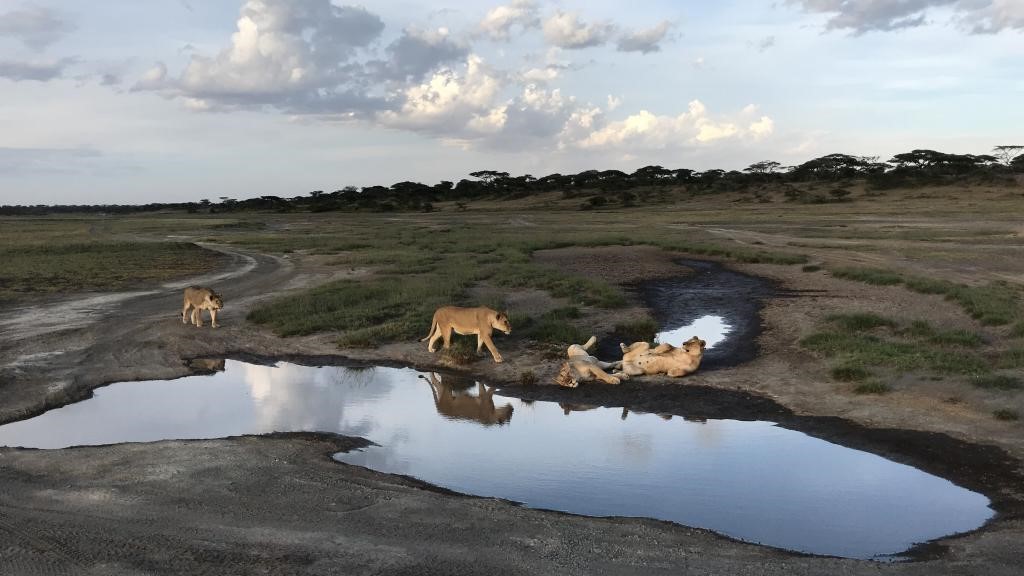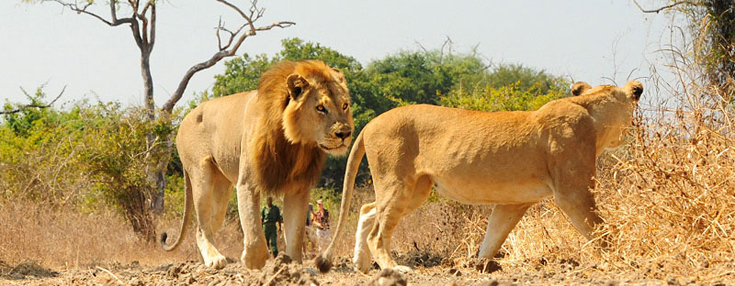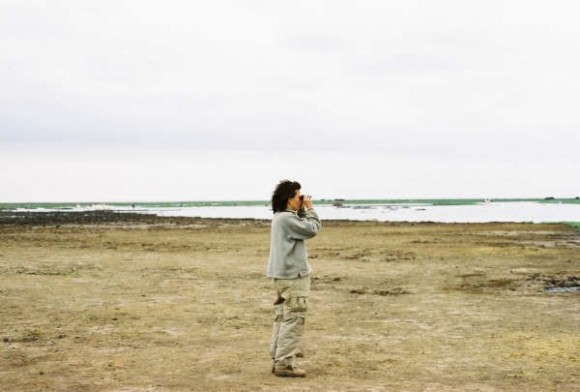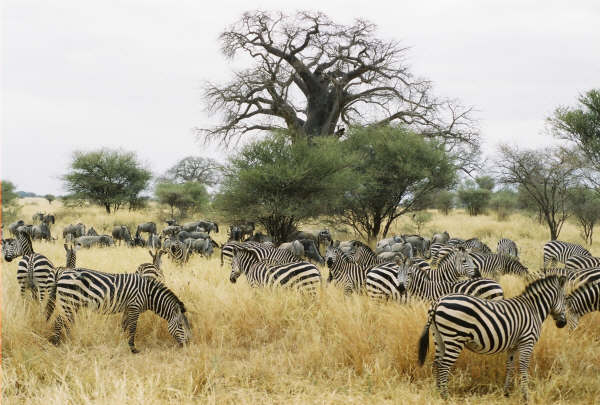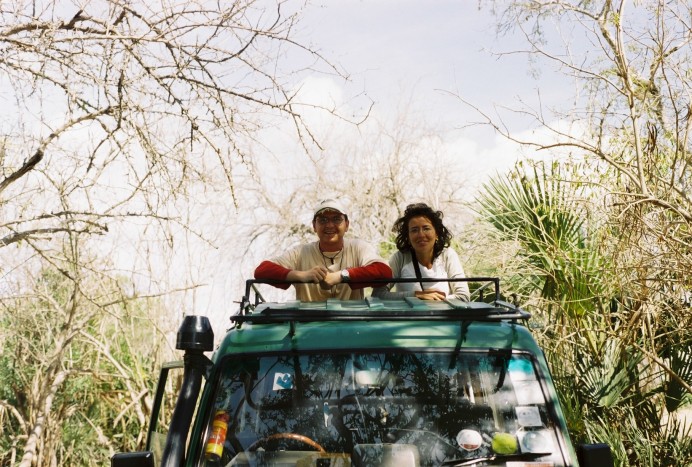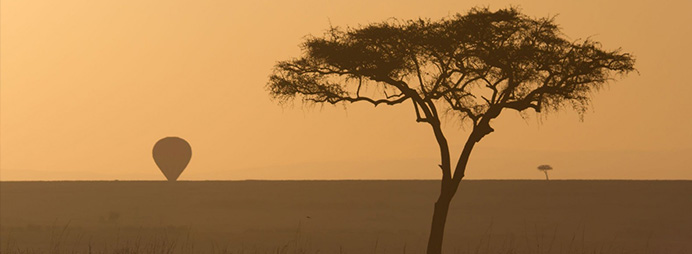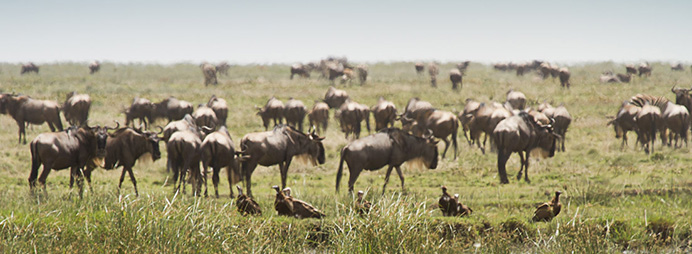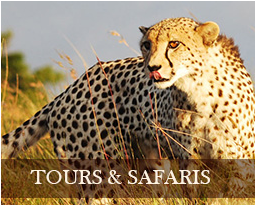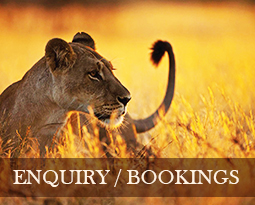Maasai Beliefs
The Maasai harmony with nature is closely entwined with their reverence for God. The Maasai believe in one God, Engai, who dwells both on earth and in heaven. Engai is a supreme God and no one else can be called by that name. There are two aspects to God: Engai narok, the God which is black, the good and benevolent God; and Engai Nanyokie, the red God, which is an aspect of Godís holy anger. The black God is seen in the thunder and rain, which bring grasses to the cattle and prosperity to the Maasai people. The red God is expressed in the violent lightening, which can strike and kill, and in the extreme dry season, which brings famine and death. To the Maasai, God is the master of both life and death.
The two most important things that the Maasai constantly pray for are children and cattle. When two people meet, they exchange the greeting, Keyaa ingera? Inguishu. (ìHow are the children? How are the cattle?). Cattle are very special in Maasai steppe, and in fact form the basis of their entire culture, being the main form if sustenance, wealth, and power. Census estimates the cattle population of Maasai steppe at about three million, more cattle per person than found in any other tribe in Africa. They also keep goats and sheep, which they consider of economic value and use for food and in ceremonies. The larger their herds, the richer the person. A Maasai may have as many as a thousand in his herd, yet without children, he is not considered truly wealthy. The rich man orkarsis applies only to one blessed with both cattle and children.
Food
The main food is Milk and Meat. Milk is a staple of Maasai diet-which people consume fresh or in sour. Babies are given ghee, another diary product, similar to clarified butter. Rarely is an animalís slaughtered for its meat, except in special occasion as when a women gives birth , when a person is very sick, when worrier go on retreats to gain straight, or when major ceremony takes place. Most of the food is shared in the Maasai society, and when one kill a cow, everybody who prefers to eat meat that day will join in.
The Maasai also drink blood during the dry season when they run of short of milk. The animal is not killed in obtaining the blood, but rather the tip of an arrow is used to make an incision in its jugular vein. Worriers, circumcised boys and lactating women often drink the blood of healthy animals with the belief that it will give them strength.
The maasai utilize every part of their cattle, besides drinking the animals milk and blood and eating meat, the maasai use urine for medication purposes, its dung for to cover and plaster their houses, its horn to make container, its hoofs for ornaments such as rings and its hides for clothing, shoes, use as mattress substitute, and ropes.food
No ceremony can be performed without including a bull or ox in one way or another. It is through their cattle that the Maasai have attained self-sufficiency. It is no wonder, then that they consider little in the world to be of equal value.
Lifestyle
Unlike female Maasai male life is well-ordered progression through a series of life-stage, which are determined by age, initiated through ceremonies, and marked by specific duties and privileges. All male pass through three main stages: Boyhood, warrior hood, and elder hood. Warriors are subdivided into junior and senior warrior and together form one generation. Approximately every 7 years, a new generation of warriors come of age. Each generation has its own name. When warriors graduate into elder hood they are replaced by another generation of warriors. Elder progress through junior and then senior elder hood, and eventually become ancient elders, who, because of their old age, retire from the active direction of Maasai affairs.
There are four ceremonies, performed by all maasai males, are.
Alama lengipaata, the ceremony boys undertake just before circumcision.
Emorata, the circumsition ceremony, which initiates them warrior hood.
Eunoto, the graduation of into elder hoods
Olngesherr, the confirmation of total elder hood.
The four ceremonies have certain features in common: ritual head shaving, continual blessings, the slaughter of an animal, ceremonial painting of the face or body, singing, dancing, and feasting. The ceremonies are performed section by section. For unknown reasons, Olgesherr must be perfomed by the llkisongo and then by the other section. For Alamal lengipaata must be opened up by the llkeekonyokie section in order for the other sections to follow.
Culture-Suggested itineraries
D2R conduct varies safari walking trip, this trip will improve your endurance while still enjoy the feeling of nature, also to meet local people.
Day 0 1: D2R adventure begins by driving to Lengijave village 26 km North of Arusha where we meet our Maasai guides and their donkeys.
Day 02: After a nice breakfast, the journey begins to follow the trail as it winds through thicker bush land crossing some dry riverbeds towards the Kiserian rocks.
Day 03: Earlier breakfast, walk towards the northeast, and towards a large dry channel of river.
Day 04: During the early morning the donkeys will be packed.
Activities:
- The adventure leads across a hilly area with rocky formations
- Late in the afternoon we will arrive to our destination named by Muriatata
- Incredible views of enormous acacia woodland vegetations and the snow covered summit of Kilimanjaro to the East.
- Dinner and overnight Muriatata Camp, the peculiar camp far away from human settlements in the heart of the East African savanna
- Enjoy this last day adventure camping under the African stars
Day 05: Good breakfast is followed by a short walk within the surrounding Muriatata hills.
Board our vehicle and heads across North Maasai land arriving in Arusha in the late afternoon to connect with onward planning (Serengeti, Tarangire, Manyara)
Priced per request
